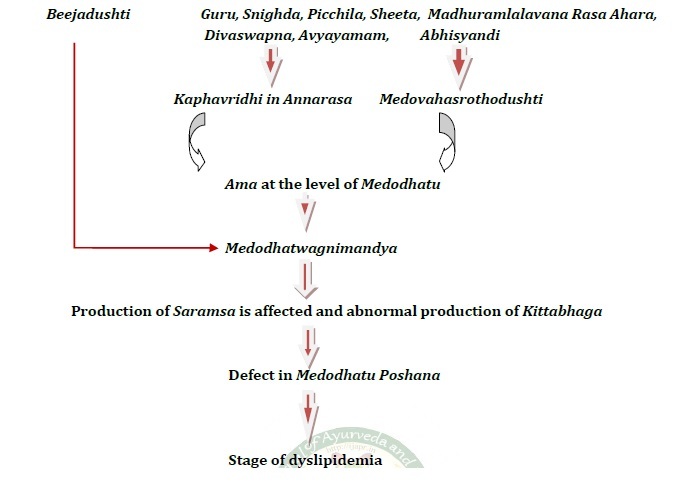Analysis of Dyslipidemia as per Ayurveda and its Management
Abstract
Dyslipidaemias refers to any abnormality in the level of circulating plasma lipids. It is an extremely significant condition, majorly because of its contribution to atherogenesis. It is an independent and modifiable risk factor for CAD and stroke. More than half of global cases of ischemic heart disease are associated with dyslipidemia. Quality of care for dyslipidemia is suboptimal in general and variable by cardiovascular disease risk group, ethnicity and gender. In modern medicine, there are effective dyslipidemic drugs which give rapid relief, but may cause some long term side effects. So there is a need for safe alternative treatment which may be effective in reducing lipid level, for prolonged use. In Ayurveda, dyslipidemia can be considered as a condition in which Kapha, Medas and Rasa are pathologically deranged due to Ama. There is defective Medo dhatu poshana due to Dhatwagnimandhya and formation of Ama at the level of Medo dhatu. It can be considered as presumable level of stage of Samprapti or a morbid state which may cause disease, but not attained a full status of disease. Nidanas include Beejadushti, Ahara – vihara –vikara and Manasika nidanas. Lipid profile can be brought back to normal by correcting Agni and ensuring proper Dhatuparinama. Treatment modalities include Nidana parivarjana, Sodhana, Samana, Rasayana and following Pathyapathya. Drug having Kaphamedohara, Deepana, Pachana, Ruksha and Lekhana property is useful to treat this clinical condition.
Downloads

Copyright (c) 2022 International Journal of Ayurveda and Pharma Research

This work is licensed under a Creative Commons Attribution-NonCommercial-ShareAlike 4.0 International License.






